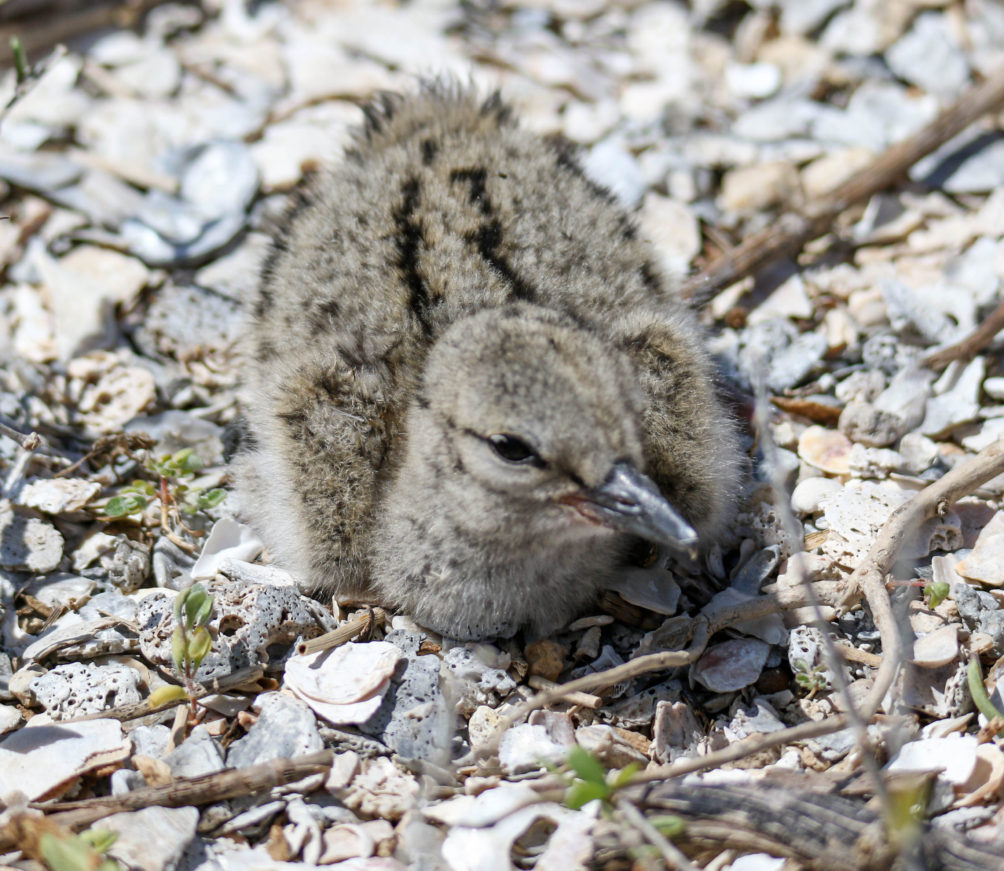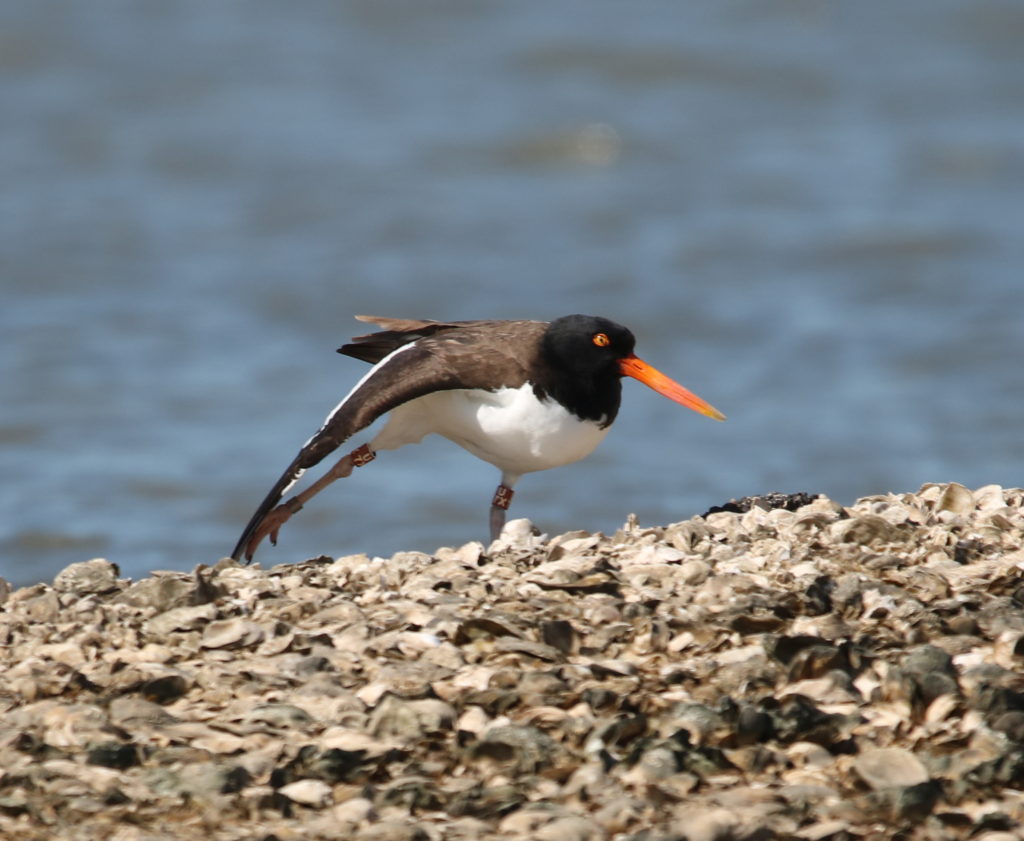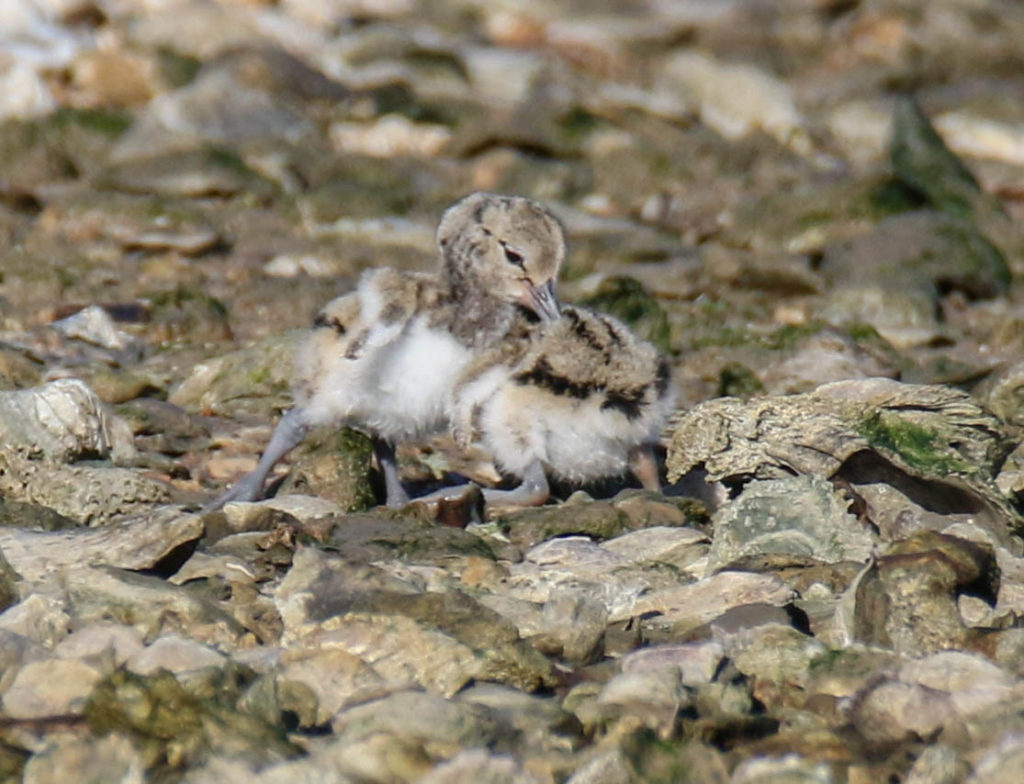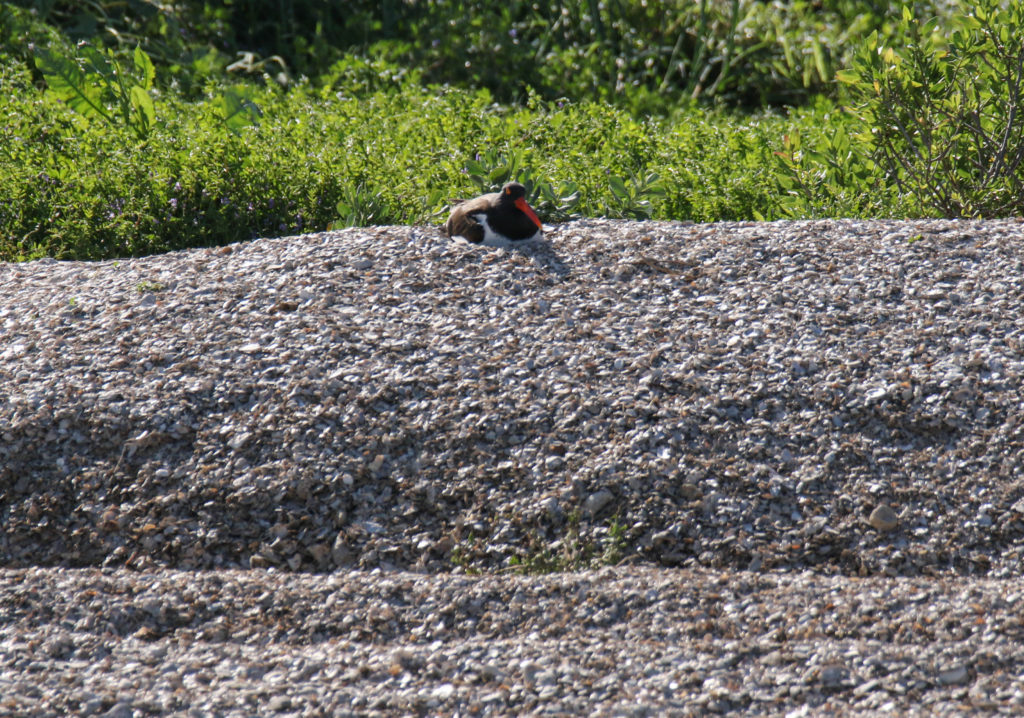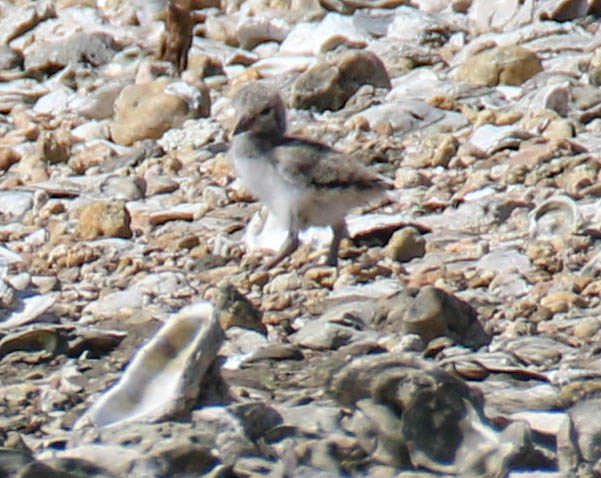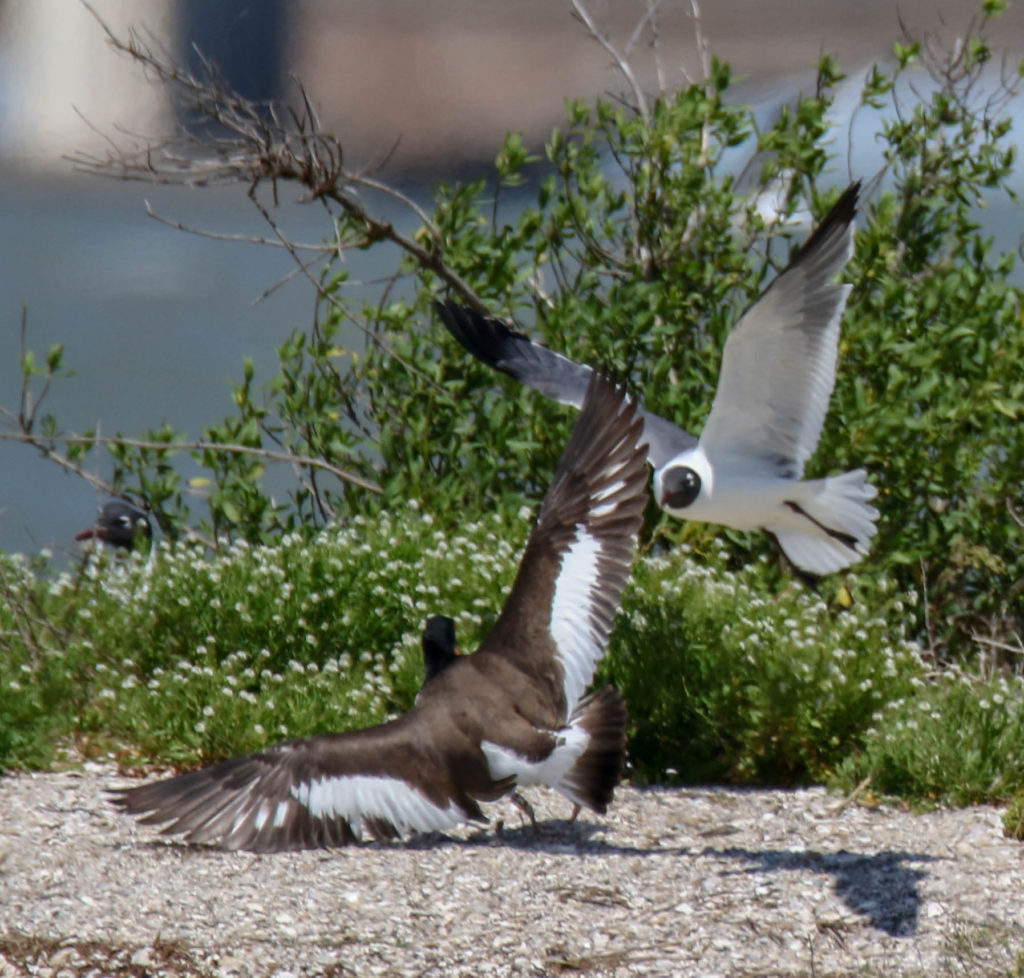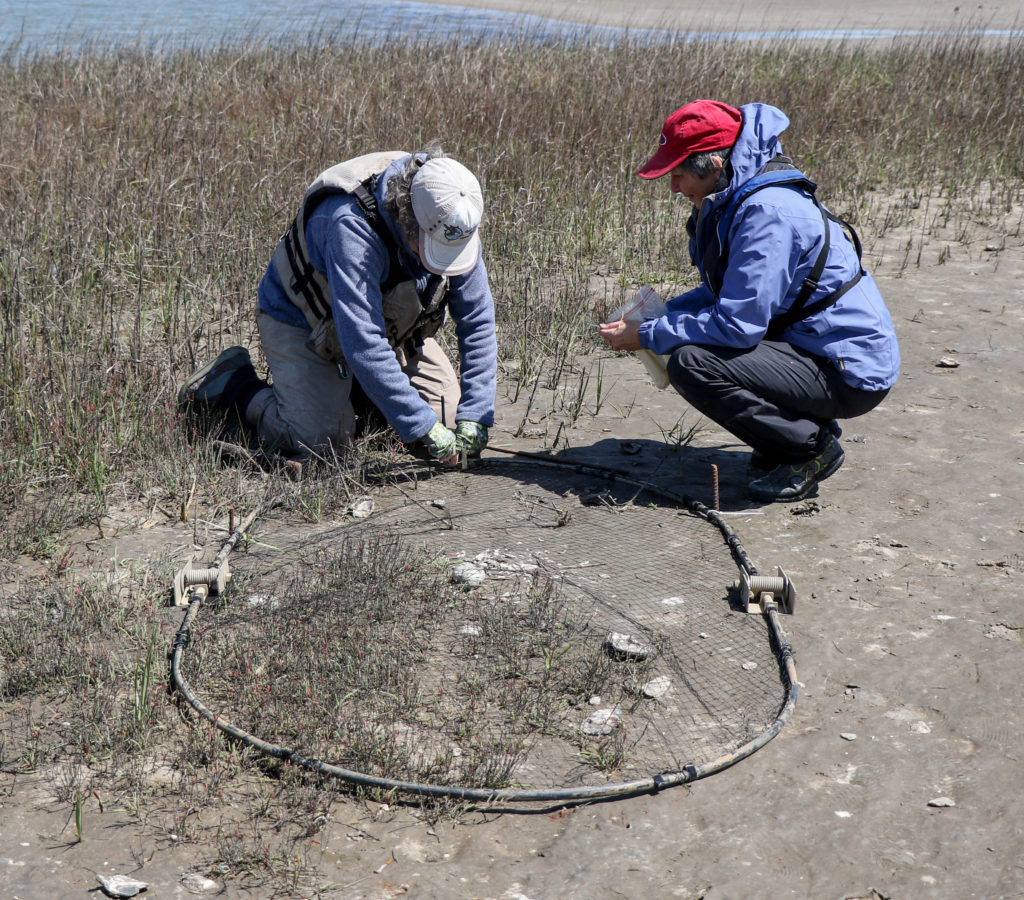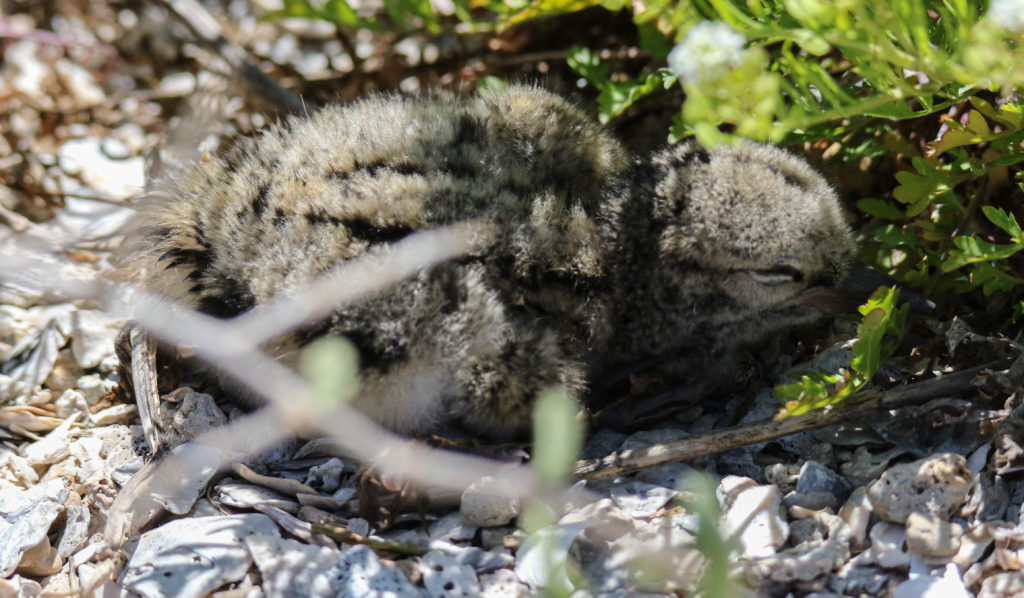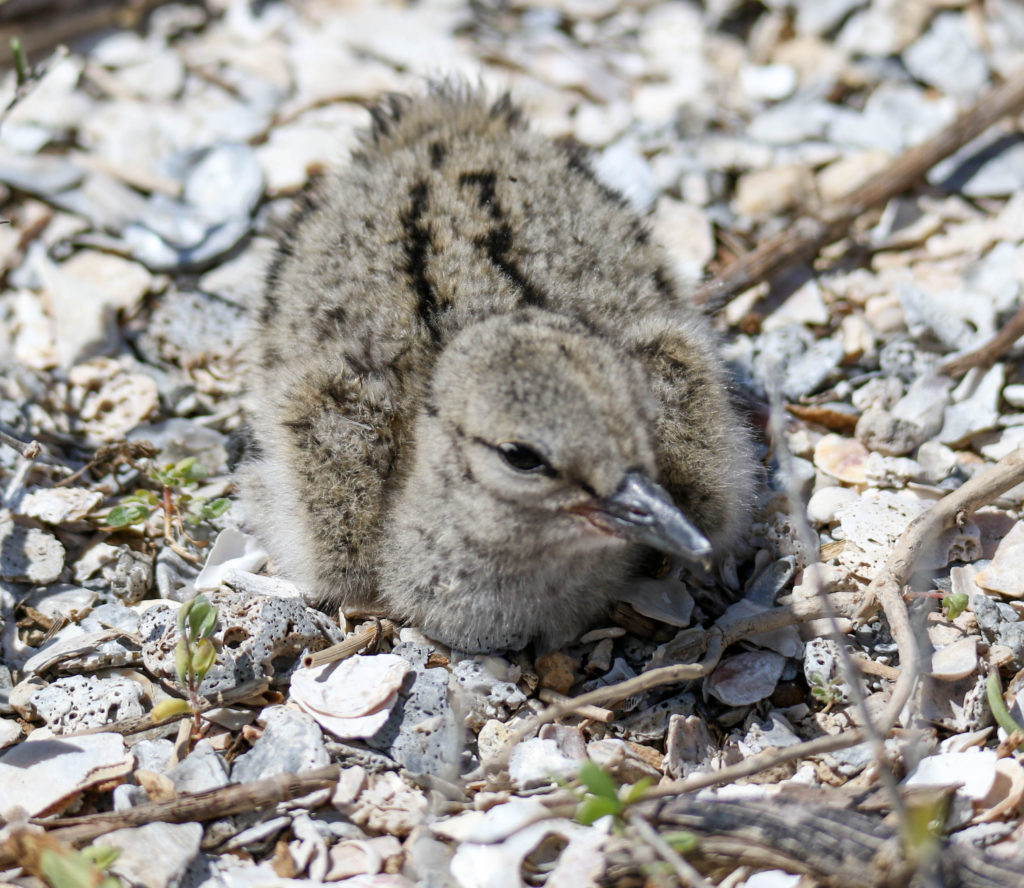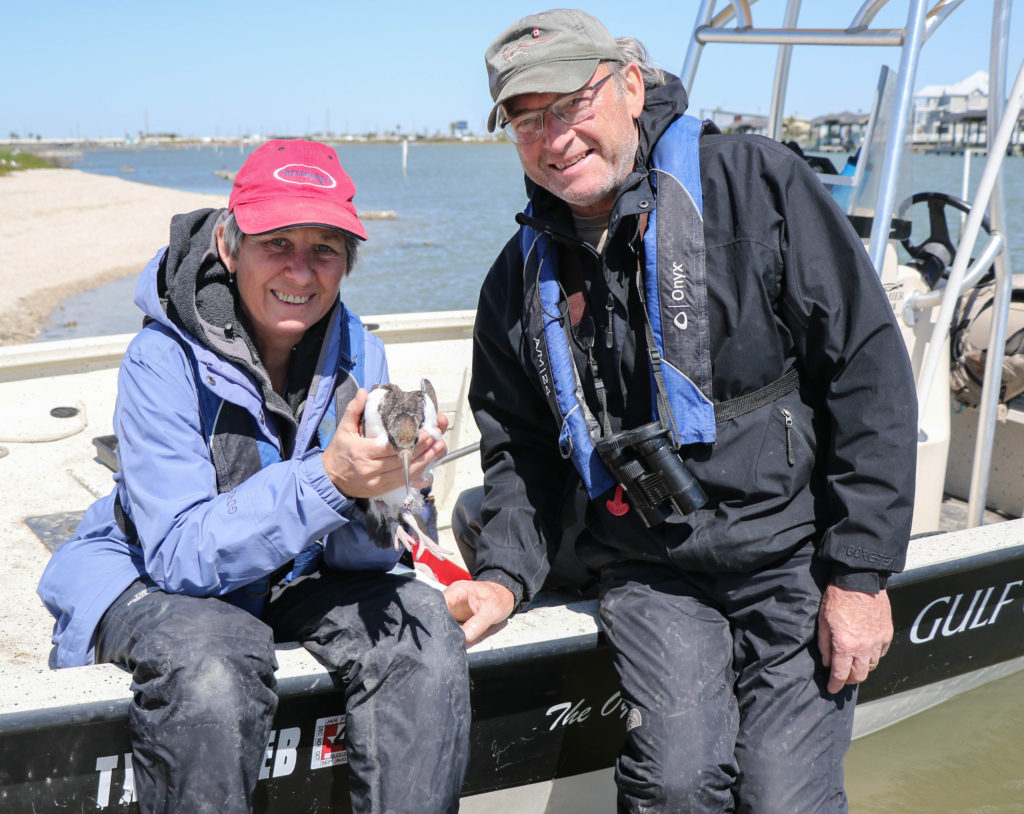By Susan Heath
This week Taylor, Kenlynn and I headed out to check the birds in the Brazoria Bays on Wednesday. It was cold and windy again. Isn’t it supposed to be warm by now? Over the weekend, the storms that came through brought a very high tide and I was fearful of what we’d find. The trip across the west end of West Galveston Bay was smooth as silk which was great! Also great was that we found that F2A & E3A had returned to the mooring facility and they had a three-egg nest. Awesome news.
The pair on Alligator Point Island had increased their egg count to three from one the last time we checked. I had hoped to try to trap one of them on the nest with the bow net because we’ve tried everything else and they haven’t gone for it. Unfortunately, I forgot to get the trap tripper out of the boat and charge it and it was dead. No trapping with the bow net without that! Bummer.
We headed down to Bastrop Bay and this time there were no oystercatchers there. I’m wondering what happened to J0 & 38. We haven’t seen them yet this year. If they are gone, I would expect another pair to have taken over their island but that hasn’t happened. Another mystery.
In Drum Bay, AR & unbanded were not giving anything away but we were able to sneak a peak at them from behind their island and Taylor was able to get a fuzzy photo of a chick with them. Ah ha! Sadly E7A & unbanded’s nest had overwashed. It was expected but still sad.
Then we went looking for K0 as we hadn’t found him on our last trip out. Eagle eye Taylor spotted a bird on a small island in an area I’ve never had birds before. That turned out to be U7X which is K7 & unbanded’s 2020 chick from Swan Lake (up by Texas City). U7X proudly showed off her bands for us.
We didn’t find a nest there but Taylor spotted another bird on another small island nearby and this one was walking down from the vegetation like it had just gotten up from a nest. That turned out to be K0 and he was on a two-egg nest! Good job K0. We confirmed that K0 & U7X are a pair. It is quite surprising that U7X would lay a nest as a two year old. I’ve never had that happen before. Usually they are at least three and often much older than that when they first start breeding. I guess K7 & unbanded are raising over achiever chicks! There is a lot of human disturbance in this area so I don’t expect this nest to make it. We removed two huge wads of fishing line from the island so the birds wouldn’t get tangled in it.
On Thursday, Alan and I were joined again by Bill and Michelle Rose our GCBO RV volunteers. They have been great help and they are leaving us next week so I wanted to give them the treat of helping to band the first chick! It was supposed to be windy so we opted out of going to Swan Lake. Alan had brought some palm leaves for chicks to hide under so we headed out to Jones Bay to leave them for E4A & unbanded.
Sadly, when we arrived, it was clear their nest had overwashed in the storms over the weekend. What a bummer! It was just about to hatch. We left the palm leaves there any way in case they have another nest and moved on. It was time for FR & unbanded’s nest to hatch and sure enough we saw two small chicks fighting along the shoreline. FR & unbanded’s chicks fought last year too and they both survived so hopefully they’ll be ok. I guess they inherited that fighting spirit from their father. He has really calmed down in his old age though.
Next up was CA & Y2. Their nest is getting close to hatching too and Y2 was doing her best to hide from us when we arrived. Too late Y2. We already know you have a nest! Still three eggs and not many gulls yet. Good deal!
We moved on to look for W5 & JC who we didn’t see last week. The tide was really low and I made the mistake of trying to go between the reefs along the GIWW and the island where its shallow. I wasn’t able to get the boat up on plane so we had to putter along until we came out the other end. We saw JC on a reef alone and that set off my nest radar. W5 must be on a nest somewhere! From the boat, we searched the areas on North Deer that are unoccupied with no luck. While we were there we checked on YM & JH. Amazingly still three eggs with Brown Pelicans on nests just feet away. Hang in there!
I decided the only place W5 could be was on the other side of Marker 52 where they’ve never nested before so we went back around to that side and there he was!
Three eggs. Way to go W5 & JC! It’s in a nice high spot and there aren’t any pelicans or gulls hanging around yet. It will be a different story in three or four weeks when the eggs hatch but they are off to a good start. I’m not sure why they’ve never nested on that side of the island.
Then we went to the other end of Marker 52 to check on J6 & UF and JJ & P4. J6 & UF were still incubating three eggs and there still aren’t any pelicans in that area. It should be hatched by next week so maybe they will make it! When I went to check on J6 & UF’s eggs I found they were gone. What?! We found that nest just in time last week because now it is hatched. They really pulled one over on us. Michelle and I searched around a bit but we didn’t find any chicks so we went back to the boat. I figured if we took the boat out into the bay and spied on them from afar the chicks would come out and they did! Two of them. Here’s one of them.
JJ & P4 haven’t had any chicks in a very long time. It was great to see them hatch a nest. I hope they can keep those chicks away from the pelicans and the gulls. We witnessed this interchange which isn’t a good sign.
C1A & unbanded had laid another egg so now they have two. Getting a little lazy there C1A? They only had two eggs last year and they fledged a chick so I guess they figure two is enough. We didn’t see the unbanded pair next door so we headed over to South Deer. F1A & E2A were both out on the reef this week instead of having one of them up in the vegetation with the chick. Their chick is getting bigger now so I guess they don’t feel like one of them has to guard it all the time. They were likely both getting food for it. Hopefully by next week it will be big enough that it will come out in the open and we’ll see it.
Last week we failed to find where 16 & F9A snuck off to so while we were going around South Deer we kept a sharp eye out for them but we did not find them. Y7 & unbanded were incubating their nest so we headed around to check on A5A & unbanded. Their egg was gone but they went beserk when I went up to check so I’m sure it hatched and they were hiding a chick somewhere. Next door, A1A & unbanded were still incubating three eggs.
The wind wasn’t as bad as we thought it would be and we toyed with the idea of going to Swan Lake but I wanted to check the Gangs Bayou birds first since we were in the area and I didn’t have to go back down there. I figured the nest on the mound behind the breakwater was overwashed but as we passed by, I saw a bird fly off of it! A4A & unbanded were incubating their nest as we motored by to go check the mound nest.
At the mound nest, we found the unbanded bird there alone again just like last week. There were two eggs now but they were about six feet from where the single egg had been last week. Was this the same egg plus one or two new eggs? The bird could have moved the single egg if the tide was threatening to overwash it but it also could have laid two new eggs if the tide took the one it had. We’ll have to wait and see if there are three next week to tell whether it was in the middle of laying a new nest or not. Since this bird was unbanded, we set up the bow net to catch it on the nest. I tested the trap tripper on the boat and it worked fine so we backed off and waited.
It took a while. The bird was just about to go back to the nest when a caracara flew over which caused it to make chase. I was surprised that didn’t bring the mate back but the unbanded bird came back alone. While it was hemming and hawing about going back to the nest with that strange thing on the ground near it, the mate appeared and we discovered it was C8A! C8A is the bird we caught on Matagorda Peninsula in October 2019 with a fishing line entanglement. It was a young bird then and we’ve been watching it ever since as it roamed around looking for a home. I guess it found one.
The unbanded bird finally went back to the nest but the dang trap tripper wouldn’t fire so we weren’t able to catch it. What a drag. It was getting late and we still had a lot to do so we moved on and decided anew to skip Swan Lake. We had already checked out the gang of youngsters on the docks so we headed east along Galveston Island still looking for 16 & F9A.
Alan spotted a single bird along the shoreline just east of 8 Mile Road and guess who! F9A. She was guarding a one egg nest. 16 flew in to help her when she started throwing a fit that we were intruding. Glad to know what they are up to! A nest on Galveston Island doesn’t stand much of a chance but we’ll see how it goes.
YK & unbanded were on separate reefs and one of them was next to a scrape on a high shelly spot. Did you not notice how high the tide came up last weekend you two? A nest there has no chance!
We moved on to Jigsaw. It was time for LH & JX’s nest to hatch but we couldn’t tell what was happening from afar. At the other end of the island there were two pairs where there should have only been one! What gives? YE & unbanded were incubating their nest and about 30 yards down the island there was another pair lounging along the shoreline. Who is that? Alan’s camera gave us the answer. X2 & W2Y. X2 was banded as a chick in 2011 and W2Y was banded as a chick in 2018. It will be interesting to see if they end up nesting there. And why are YE & unbanded tolerating such an intrusion? It’s a mystery.
We still couldn’t tell what was up with LH & JX so I went up to check the nest. The eggs were gone and instead if I found this.
So cute. Way to go LH & JX. Keep them safe!
Finally we headed to the last island, Struve Luci. L9 & unbanded’s nest had hatched but we didn’t disturb them to look for chicks. It was pretty clear from their behavior that they had some. E5A & unbanded were still incubating three eggs and 12 & unbanded went nuts when I went to check on E5A’s nest so I’m sure they still have at least one chick. HM & X7 were hanging out on a reef so no nest for them yet. We motored back down and saw one of LT & JA’s chicks along the shoreline. Show time.
I gave Bill and Michelle a quick run down of how to catch a chick and they jumped off the boat with the dip nets. The chick made a quick dash down the island but it couldn’t go too far without getting into L9 & unbanded’s business and I guess it knew that because it tried to double back. Bill snagged it in the dip net. We searched and searched but we could not find another chick. Did they lose one? We’ll find out next week! We banded the one we had X0U. Its primary feathers weren’t all the way grown in yet but it may be able to fly by next week.
The wind had picked up significantly and we got pretty wet heading back across the bay. We checked on E1A & C2A’s nest on the way back to the boat ramp. I was pretty sure it was overwashed and yes indeed it was. They weren’t there for us to give them our condolences and I also wasn’t able to say “I told you so!”. Poor birds.
If you like oystercatchers and you want to support this project, you can make a donation (thank you!) on our website here. And how could anyone not like oystercatchers!
Current Stats for upper Texas coast from Dickinson Bay to East Matagorda Bay: 15 nests being incubated, 3 failed nests, 9 nests with unfledged chicks, 0 nest with undetermined status, 0 chicks fledged
Note: All trapping and banding for this project is in accordance with federal and state permits issued to Susan Heath, GCBO Director of Conservation Research. Bird handling by volunteers is only permitted in the presence of Susan Heath and volunteers are trained in proper bird handling techniques.

